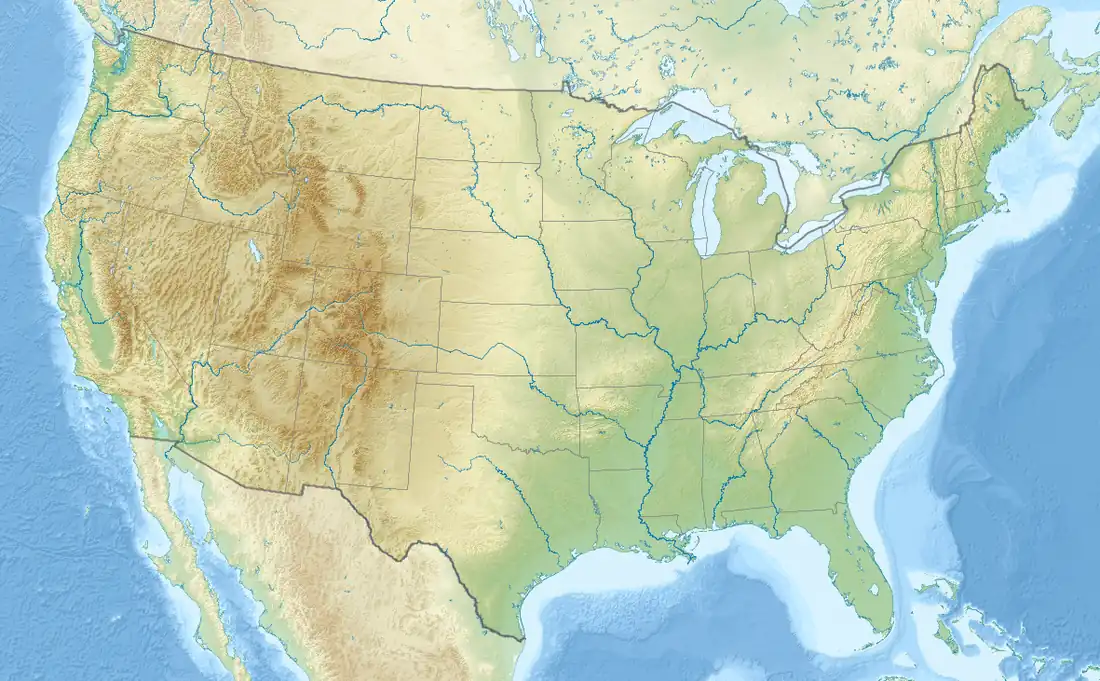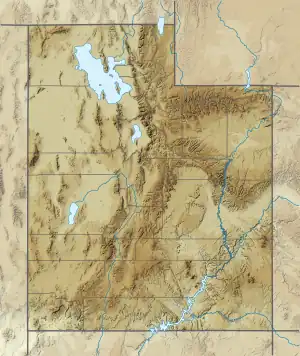| Humbug Formation | |
|---|---|
| Stratigraphic range: Mississippian (Meramecian) | |
| Type | Formation |
| Thickness | More than 2,100 feet (640 m) (Stansbury Island) |
| Lithology | |
| Primary | Dolomite |
| Location | |
| Coordinates | 40°12′N 111°42′W / 40.2°N 111.7°W |
| Approximate paleocoordinates | 3°06′S 46°54′W / 3.1°S 46.9°W |
| Region | Utah |
| Country | |
 Humbug Formation (the United States)  Humbug Formation (Utah) | |
The Humbug Formation is a geologic formation in Utah. It preserves fossils dating back to the Mississippian (Meramecian) of the Carboniferous period.
Description
The Humbug Formation includes intercalated limestones, orthoquartzitic sandstones, and dolomite. It is more than 2,100 feet (640 m) thick on Stansbury Island but thins to the east and south. There the formation averages about 600 feet (180 m) thick.[1]
Fossil content
The following fossils have been reported from the formation:[1]
- Bryozoans
- Fenestella acarinata
- F. crockfordae
- F. hamithensis
- F. rarinodosa
- F. serratula
- F. tooelensis
- F. trifurcata
- Hemitrypa reticulata
- Polypora micronodosa
- P. stansburyensis
- Ptylopora eliasi
- Septopora sp.
See also
References
- 1 2 Humbug Formation at Fossilworks.org
Bibliography
- L. H. Burckle. 1960. Some Mississippian fenestrate bryozoa from central Utah. Journal of Paleontology 34(6):1077-1098
This article is issued from Wikipedia. The text is licensed under Creative Commons - Attribution - Sharealike. Additional terms may apply for the media files.